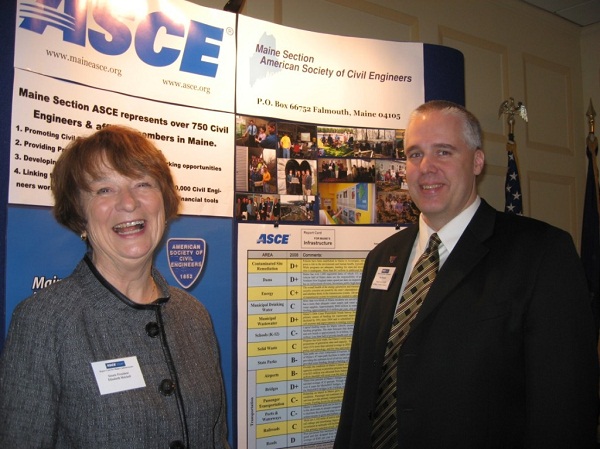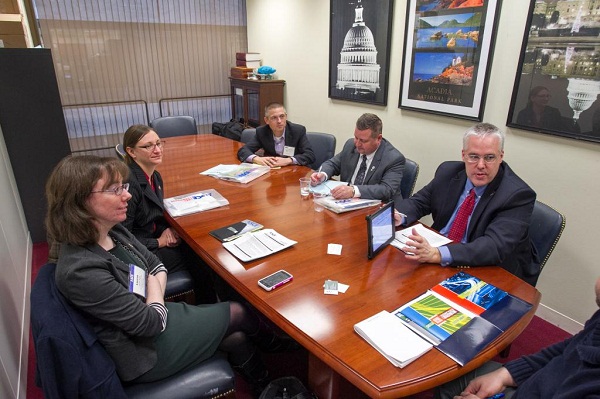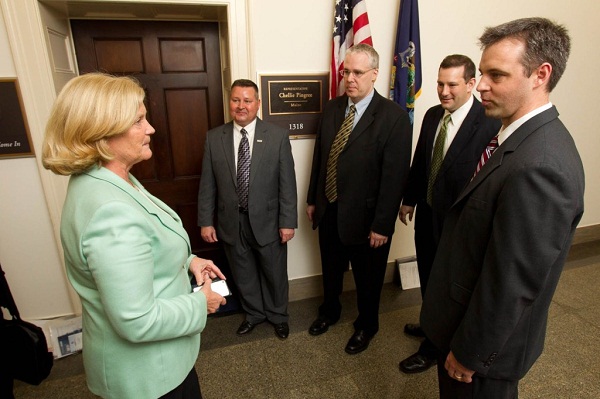#Game Changer Trend – Accelerated Bridge Construction
September 2nd, 2015 | By: America's Infrastructure Report Card
Accelerated bridge construction We all know the feeling of frustration when traffic slows to a crawl as you see the telltale signs of traffic cones and reduced lanes up ahead. Large bridge replacement or rehabilitation projects mean that disruptive construction zones can last months into years. Accelerated bridge construction is a design and construction method that uses prefabricated materials and other strategies to minimize traffic disruptions and reduce onsite construction time. As many components of the bridge as possible are constructed ahead of time so that road closures are required only when moving the elements into place. For projects that do not require custom engineering, movable bridges and accelerated bridge construction can greatly decrease construction disruptions without sacrificing quality. Standardized approaches streamline the activities required to get bridge replacement systems designed and built in less time -sometimes installed in hours or days, rather than weeks or months. Keep the Work Off the Road – Kittery, Maine The Kittery Route 1 Overpass bridge was over 70 years old and located in a tourist destination area. Using accelerated bridge construction saved the Maine DOT in construction costs and shaved significant time off the project. The precast concrete elements were delivered on time, and the town of Kittery was pleased with the results. The closure of Route 1 lasted less than a month, and the closure of Route 236 lasted only 11 hours. Overall, it took less than a year between when the project was advertised and final construction was complete. Slide Into Place – Phoenix, Arizona In the Gila River Indian Community south of Phoenix, they employed a “bridge slide,” the first of its kind in Arizona, to place the pre-manufactured sections of bridge in position. It was done with minimal traffic disruptions and shrunk the construction period from four months to nine days. The previous 140-foot bridge was built in 1961 and the location sits over a riverbed, which had been known for water spilling over the bridge decks during flood events. During construction, the old structure remained open to traffic almost the entire time. At the final stage of the project, the old structure was demolished and two girders and bridge decks were slid together to form the new bridge. Jointless Construction – Defiance, Ohio The Federal Highway Administration worked with officials in Defiance County, Ohio, on a form of accelerated bridge construction that uses geosynthetic-reinforced soil. Rather than drilling a deep foundation, the reinforced soil method builds up the substructure in a faster, simpler way, described as akin to building a layer cake. For this type of bridge, there is a smooth transition from the roadway to the superstructure, resulting in a jointless bridge system. With this approach, the County’s first project, the Bowman Road Bridge, was built in just six weeks saving about 25 percent compared to their conventional bridge construction. They not only succeeded in building a bridge for less money and time, but the County went on to rebuild 25 additional bridges in this same manner. Every day, new Infrastructure #GameChangers are changing how we build and use infrastructure. ASCE collected these game changing trends in energy, freight, transportation and water infrastructure into an interactive, web-based report at ASCEGameChangers.org. Find out more here, share these trends on social media using #GameChangers, or submit your own #GameChangers project!Advocate Profile: Peter S. Merfeld, P.E., M.ASCE
August 27th, 2014 | By: Becky Moylan
Peter S. Merfeld, P.E., M.ASCE is a member of the Maine Section. He has exhibited leadership experience as section president, Maine Report Card chair, and through work on the national Report Card for America’s Infrastructure. He is also a Board member of IBTTA (International Bridge, Tunnel and Turnpike Association). These roles led him to become an advocate for infrastructure investment on the state and federal levels, an issue that is particularly important currently as the federal Highway Trust Fund heads toward insolvency. As the chief operations officer at the Maine Turnpike Authority, Peter offers day-to-day operational guidance to the Highway & Equipment Maintenance, Engineering & Building Maintenance, and Public Safety departments. He also prepares, plans and oversees the annual Maintenance and Capital Program budget. His role requires him to work closely with the Maine DOT to ensure inter-agency communication and coordination, and review Turnpike policy needs and changes. If you are interested in becoming involved in ASCE’s Key Contact program and promoting the profession through advocacy, you can learn more information and sign up at asce.org. How did you become interested in and get involved in advocacy for your profession? In 2006 as President of the Maine Section, fellow ASCE member and Past-President Phil Dunn gave a report that Michael Michaud, Maine Congressman from the 2nd district had asked Phil “Where is the Maine Report Card?” while he was attending the Fly-In. The Report Card on America’s Infrastructure was seen as a credible tool in providing policy makers with facts about the status of our roads, bridges, and other important infrastructure. After talking with others in Maine section ASCE leadership, it was agreed that having a Maine Report Card could be a great tool for Maine civil engineers to engage our policy makers in a conversation about infrastructure funding. An area that we, as a Section, had not done a great job up to that point. The local Report Card though would be a major undertaking. Due to overwhelming support from the section, I made the easy decision that once I completed my tour as Past-President, in fall 2007 I would take on the role of chair of the committee that would develop and create a Report Card for Maine’s Infrastructure.
Peter Merfeld (right) and Maine Speaker of the House and former Senate President Elizabeth Mitchell at 2008 release of the Report Card for Maine’s Infrastructure

Maine delegation in 2014 with Peter Merfeld presenting the 2013 Report Card for America’s Infrastructure app to Senator Susan Collins (Maine) staff member John Kane.

Congresswoman Chellie Pingree (Maine) speaks with ASCE representatives from Maine in March 2012: Greg Blake, Peter Merfeld, Jason Gallant and Walter Fagerlund.
Tags: advocacy, advocacy profile, Maine
No Comments »
Sometimes It's Best to Look Beneath You: A Successful Geothermal Project at Portland International Jetport
July 1st, 2014 | By: Infrastructure Report Card
 Commit to Success
America’s infrastructure needs a national commitment to bring existing infrastructure into a state-of-good-repair, and in the long term we must modernize and build in a targeted and strategic manner. This means leadership at the federal, state, and local levels of government, by businesses and individuals, to communicate the importance of our nation’s infrastructure, to craft innovative solutions that reflect the diverse needs of the nation, and to make the investments the system needs. By employing strategies to use every dollar more efficiently and by deploying creative solutions to infrastructure development such as public–private partnerships, we can implement the right projects on time at the right price.
Airport Finds Sustainable Success Underground
Commit to Success
America’s infrastructure needs a national commitment to bring existing infrastructure into a state-of-good-repair, and in the long term we must modernize and build in a targeted and strategic manner. This means leadership at the federal, state, and local levels of government, by businesses and individuals, to communicate the importance of our nation’s infrastructure, to craft innovative solutions that reflect the diverse needs of the nation, and to make the investments the system needs. By employing strategies to use every dollar more efficiently and by deploying creative solutions to infrastructure development such as public–private partnerships, we can implement the right projects on time at the right price.
Airport Finds Sustainable Success Underground The centerpiece of the Portland International Jetport’s $75 million terminal expansion project was the installation of a geothermal heating and cooling system that reduces operating costs and emissions. A creative first in the airport industry, the $3 million project was able to make use of a $2.5 million Federal Aviation Administration (FAA) Voluntary Airport Low Emissions (VALE) grant.
The system will maintain a constant temperature inside the terminal building by injecting heat into the ground during the summer and taking heat out of the ground during the winter. The system has 23 miles of high-density polyethylene piping and 120 ground wells that reach as deep as 500 feet. The system moves more than 475 gallons of water per minute with a 125 horsepower pump.
The new systems replace an oil-fired system and will save $160,000 in operating costs and prevent the emission of 1,000 tons of carbon per year, promoting both healthier infrastructure and alternative energy.
The centerpiece of the Portland International Jetport’s $75 million terminal expansion project was the installation of a geothermal heating and cooling system that reduces operating costs and emissions. A creative first in the airport industry, the $3 million project was able to make use of a $2.5 million Federal Aviation Administration (FAA) Voluntary Airport Low Emissions (VALE) grant.
The system will maintain a constant temperature inside the terminal building by injecting heat into the ground during the summer and taking heat out of the ground during the winter. The system has 23 miles of high-density polyethylene piping and 120 ground wells that reach as deep as 500 feet. The system moves more than 475 gallons of water per minute with a 125 horsepower pump.
The new systems replace an oil-fired system and will save $160,000 in operating costs and prevent the emission of 1,000 tons of carbon per year, promoting both healthier infrastructure and alternative energy.
Tags: aviation, energy, Maine, report card, success, sustaina
1 Comment »



 */ ?>
*/ ?>











